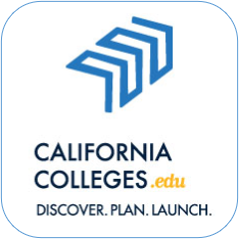
Savings Tips & Resources
How can Students Prepare for College?
Enroll in AP classes
Take challenging courses to prepare yourself for college and to earn free college credits! Taking AP classes and the AP exam means fewer courses you will have to take in college. Also, being a AP student not only makes your transcript impressive to college, it also sets you to a path of grants and scholarships offered by some colleges.
Keep in touch with you counselor regularly
Your high school counselor can help you plan the most appropriate course schedule that will satisfy your high school requirements and aid your college admission. Also, counselors can also be helpful in help you find scholarships and other financial aid.
Take the PSAT/NMSQT
The PSAT/NMSQT exam prepares you to take the college entrance exams and it gives you an opportunity to be recognized by the National Merit Scholarship Program.
For further information, visit the PSAT/MNSQT website.
Choose between the SAT or ACT
You may want to consider taking only the exam that benefits you the most according to your chosen college. Taking only the SAT or ACT rather than both exams can help you cut down on costs and the amount of time you need to study. However, the downside to taking only one exam is having less options to being admitted to larger range colleges that may require the exam that you chose to not take.
* If you want to take both exams, do not forget about the fee waivers! Ask your high school counselor if you qualify.
Keep your grades up
Getting good grades not only helps you get into the college of your choice, but it gives you a lead on college scholarships. However, do not forget to not only focus on your grades. It is also important to focus on the content of the class, so you can understand what it is being taught and do well on the SAT and ACT.
Apply for scholarships
Start researching for scholarships early. Many scholarships deadlines can be as early as the end of junior year. You ask your counselor, online or the financial aid departments of the colleges you are interested to attend.
Click on Scholarship Tools to start looking for scholarships.
Get involved
As a high school student, you can do some volunteering, joining clubs, and participating in community activities and sports. Being involved in extracurricular activities makes your transcript look good and it allows you to qualify for scholarships specified by the activities you have done.
Start learning about financial aid and student loans
It's never too early to start doing research on how the financial aid process work. Familiarize yourself with financial aid and student loans, so you can start making a financial plan for college.
Create a financial plan for college
Don't wait the last minute to start thinking how to pay for college. Prepare yourself by doing research and talking with your parents. Once you know how much help you can get from financial aid and your parents, then you will be able to plan accordingly to what to do next. For example, you can consider what colleges you can afford or if you need to apply for scholarships, loans or get a part-time job.
Who Gets Aid can help you estimate your eligibility for federal student aid.
Get a part-time job
Working part-time can help you earn money for college and it will look great on your college and scholarship applications. Also, having a part-time job can get you excellent letters of recommendation and you get to evolve your time management and cooperative skills that will help you in college.
Keep your summers productive
You can enjoy your summer doing what you like most, but also keep it productive. You can spend some of your summer doing an internship, shadowing careers or volunteering. Also, many colleges offer summer programs for high school students, which can take advantage of gaining connections and possible college credits.
Earn college credits
Check nearby colleges for courses that you can enroll while you are still in high school. You can save time and minimize your future cost by earning some credits in advance. Keep in mind to check if the college credits you earn will transfer to the college you plan to attend.
How can Parents Prepare for College?
1. Begin planning early
- Visit college websites to get a general idea of what they cost to attend and determine how much you may need to save
2. Open a college savings account. There are many optional financial plans that can help you get ahead. For example:
- 529 college savings plan: A 529 plan is a college savings plan that offers tax and financial aid benefits. 529 plans may also be used to save and invest for K-12 tuition in addition to college costs. There are two types of 529 plans: college savings plans and prepaid tuition plans. Almost every state has at least one 529 plan. There is also a 529 plan operated by a group of private colleges and universities. How to open a 529 plan in California.
-
Uniform Gifts to Minors Act/ Uniform Transfers to Minors Act (UGMA/UTMA): UGMA/UTMAs are custodial accounts that let parents (and others) make an irrevocable gift to a minor that can be used for college or any other purpose. For federal tax purposes, investment earnings are generally taxed at the minor’s tax rate, which is usually lower than a parent’s rate. How to open a UGMA/UTMA account.
-
Coverdell Education Savings Account (ESA): Coverdell ESAs allow you to save for college and withdraw money for qualified higher education expenses federal income tax-deferred. However, the annual contribution limit is only $2,000 per beneficiary and higher income households may not be eligible. How to open an ESA account.
3. Make regular contributions
Treat your savings like a monthly bill, contribute whatever you can afford now, and challenge yourself to increase the amount over time.
4. Research Financial Aid Guidelines
Familiarize yourself with need-based aid, such as government subsidized loan programs, direct grants, scholarships, or tuition discounts for qualified low-income students; and merit-based aid, which includes financial awards for students who excel academically, athletically, or through other talents. Also, know the real impact of student loans. To estimate potential loan payments and the salary needed to pay them off without hardship or help, try the student loan calculator at finaid.org
5. Talk to the students about contributing financially
Having a student take a part-time job can help the student to contribute financially for a higher education, but also it provides work experience, which looks good in a college application. Let your student experience the work force that will help him or her to become more independent and self-reliable.
 CALIFORNIACOLLEGES.edu
CALIFORNIACOLLEGES.edu
CaliforniaColleges.edu provides students with an all-inclusive guide for their college & career paths & enables educators to track their progress.